Last updated: April 24, 2025
Article
The Oasis Newsletter: Spring 2025

Program Manager's Corner
Perspective
It’s been a while since I last penned a note in the MOJN newsletter. For the last 9+ months, I have been serving a temporary promotion detail as the Southeast Region Natural Resource Division manager. This opportunity started out as a 4–5 month gig, but due to a few different reasons has extended through now and could go a full year before returning full time as the MOJN program manager. We recently re-negotiated an agreement that has allowed me to return to MOJN duties around 50% of the time. Working in a regional office has been quite interesting as I have been given a new perspective in supporting parks with their natural resource management needs. I&M supports parks by implementing long term ecological protocols that provide parks large data sets to review potential changes to their natural resource “vital signs.” Whereas regional offices provide subject matter expertise for more immediate needs via technical assistance requests, while also facilitating funding for research or shorter-term projects via the Servicewide Comprehensive Call.
Both regional and I&M services support natural resource management in parks. Similarities between these two support programs include a need to be adaptable while managing change. Changes can be biological or administrative. But regardless of the why, we need to determine how to navigate change. In the last year or so, the I&M Central Support Office has been honing a set of “Core Expectations*” for vital signs monitoring. These core expectations establish a framework for managing a sustainable, impactful, and relevant program. In addition, we have to be flexible and adaptable to change. In the close to nine years I have been the MOJN program manager, I have seen a lot of change (does 2020 ring any uncomfortable bells?).
I’ll close out this note by adding a well-known adage with a twist. The only constant is change AND this change ends up helping us in the long run. We learn, we adapt, we get creative, and we find success. Just like how our long-term monitoring doesn’t usually bring immediate benefits to park management, challenging times usually don’t provide any obvious benefits to our lives. But when we look out further, collect more data, and learn from difficult situations, we can begin to see “trends,” and these allow us to more quickly adapt or bounce back after a challenging circumstance. Eventually the dust will settle, and we will more clearly see a path forward so we can accomplish the important work we do to protect and preserve parks within the Mojave Desert Network.
* Document is internal to Department of Interior staff.
Staff Updates
Welcome
We have been joined in recent months by some new and familiar faces! Meet the new (and returning!) folks who are helping us with our hydrology, vegetation, and bat monitoring protocols this spring, summer, and beyond.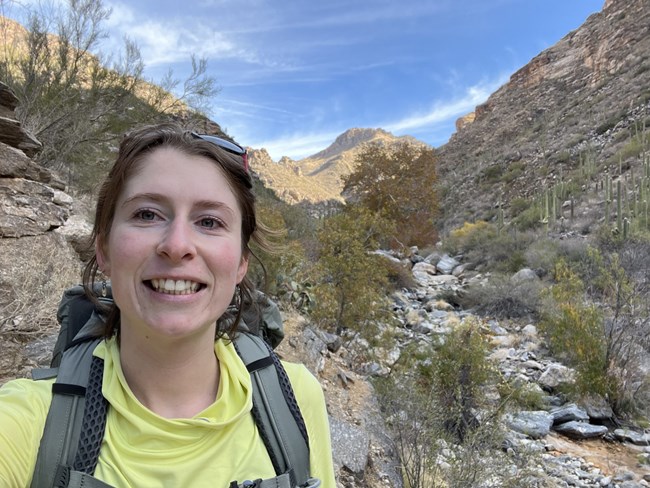
Athena Lynch
Athena returns to MOJN to work on our hydrology protocols as a permanent physical science technician! After working at MOJN last summer as part of our “Vegetation A-Team,” Athena went on to spend the fall and winter working with the USGS doing Mojave desert tortoise and vegetation work. In January, she joined us again (making a switch from plants to water) and will spend most of her time assisting with the Desert Springs, Selected Large Springs, and Streams and Lakes protocols. Welcome back, Athena!
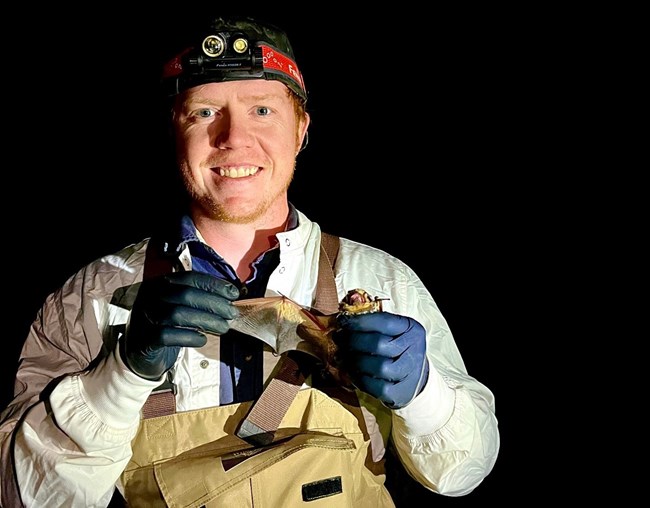
Casey Devine-Rosser (Great Basin Institute)
In January, MOJN welcomed Casey as our bat field lead! For 11 months, Casey will run the logistics of implementing acoustic surveys and white-nose syndrome surveillance in the network. Casey has worked with bats throughout the west since 2014 and had previously assisted both MOJN and the Klamath Inventory and Monitoring Network with white-nose syndrome sampling. Welcome to MOJN, Casey!

James Bardo (Great Basin Institute)
James joined the MOJN vegetation monitoring program in February via the Great Basin Institute and will be assisting us with our Integrated Uplands Vegetation and White Pine projects. After studying environmental studies and sociology in Florida, he has spent several seasons in the Mojave Desert working on a variety of vegetation-related efforts including restoration and rare plant surveys. Welcome to our team, James!
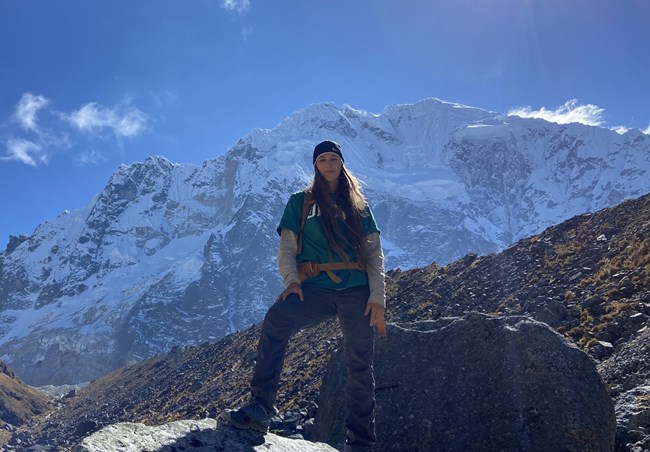
Ellie Bucci (Conservation Legacy)
MOJN also welcomes Ellie, who joined our vegetation monitoring team in March! She has previous experience with Inventory and Monitoring, working with the Pacific Islands Network as a biological technician, where she helped with monitoring the wet forests of Kalaupapa National Historic Park. We are glad to have you on board, Ellie!
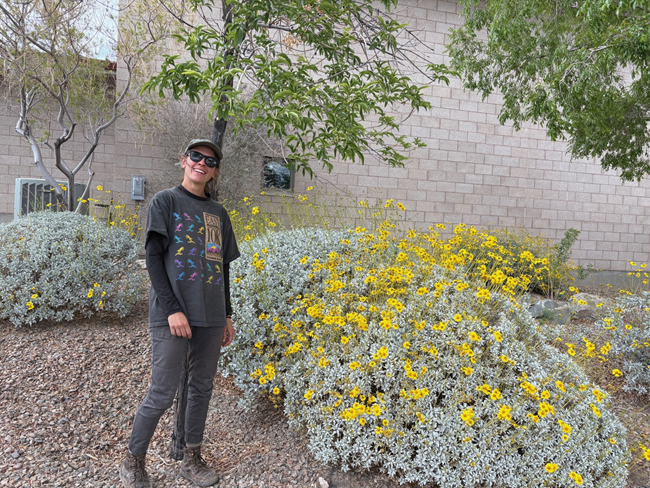
Janelle Lincks (Conservation Legacy)
Hailing most recently from Colorado, Janelle comes to us with experience working in a tree seedling nursery and in two botanical parks, where her passion for plants took root. Her growing interest in environmental conservation led her to MOJN, where she will work with the vegetation crew in implementing our vegetation monitoring projects. With her English literature degree, she is also well-positioned to explore the world of science communication. Welcome, Janelle!
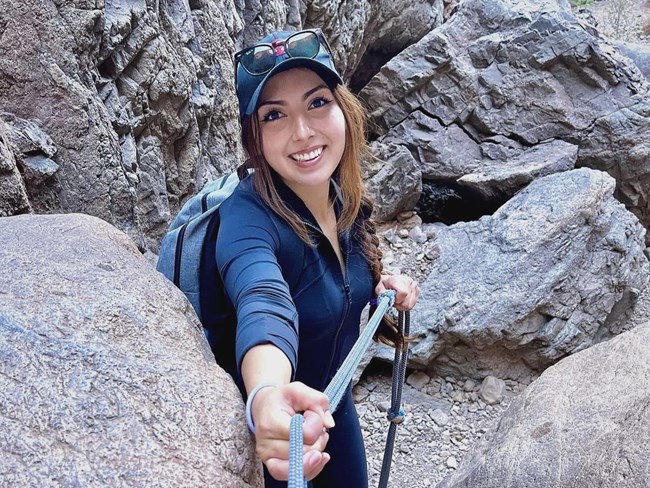
Andrea Medina-Ramos (Conservation Legacy)
As a Las Vegas local, Andrea comes to us already familiar with the Mojave Desert area, and particularly its soils! She has worked with several labs studying soil microbial DNA and seed banks. She will be helping our vegetation team with implementing our monitoring protocols and with Invasive Species Early Detection Monitoring. We’re happy to have you on the team!

Diego Pumarejo (Conservation Legacy)
Diego started working with us in March and is getting training on all things vegetation, as he will be assisting with our Integrated Uplands Vegetation, and White Pines monitoring projects this summer. He has worked as a student research assistant in a plant ecology lab, collected data interactions of tallgrass prairie plants with fungi and bacteria, and as a fire effects monitor. Welcome to MOJN, Diego!
Farewell
We recently had three staff members decide to move on to new endeavors. We are deeply grateful for their contributions and their dedicated hard work for MOJN over the years. Mark Lehman, our Data Manager, started with MOJN over ten years ago, and has diligently ensured the quality of the data we collect, has made our data available to the public as data packages in the NPS Data Store, and mentored many assistant data managers and data scientists along the way. Kyle Smith joined MOJN in 2020 and has been assisting with all our vegetation protocols, most recently as the field logistics lead, and also shared his skills for part of each season with the Upper Columbia Basin Network. Em Michael, our physical science lead technician, started in November, helping implement our hydrology protocols. We will miss you all and wish you the best in your new directions. Stay in touch!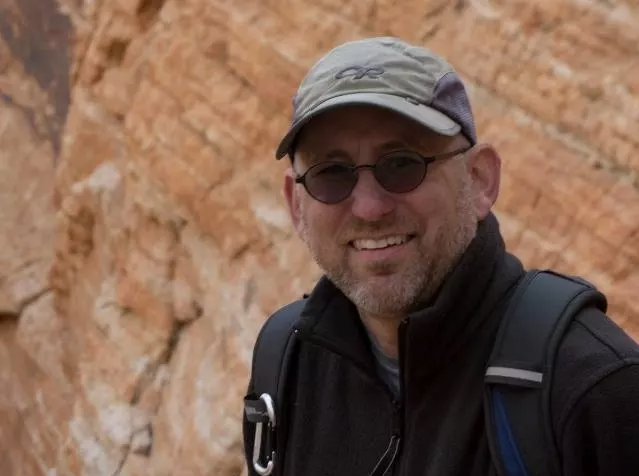
"After nearly 20 gratifying years split between the National Capital Region and Mojave Desert I&M networks, I will be retiring. I will be pursuing hobbies like wildlife photography, attending bluegrass festivals, and adding to my life list of national parks visited."
– Mark Lehman, MOJN Data Manager
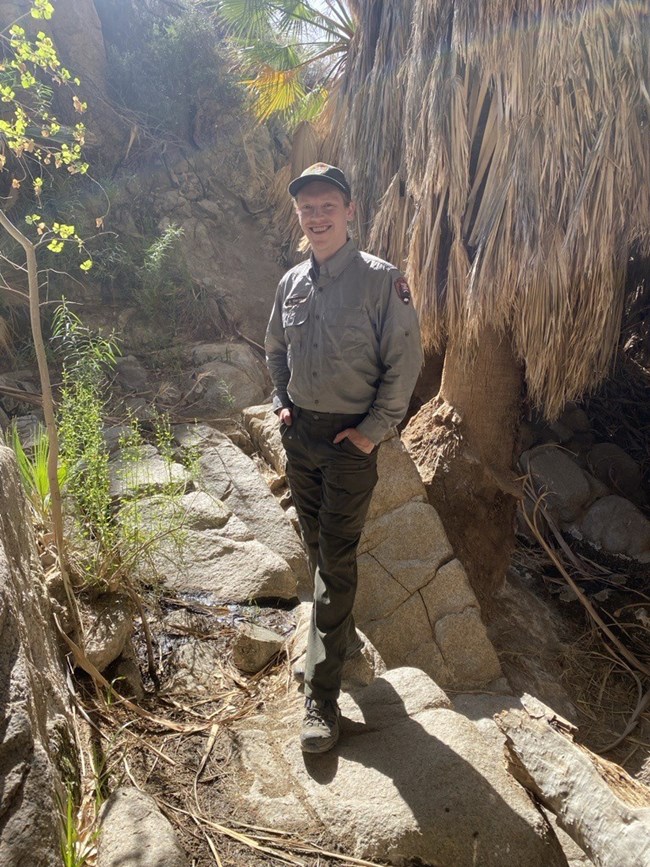
"Over the past five years of working for the Mojave Desert Inventory and Monitoring Network within the park service, I have significantly grown my skills and abilities in natural resource science. I have had the pleasure of assisting and leading many vegetation monitoring efforts in many different national parks. Expanding my skills by assisting other crews with hydrology and bat monitoring has been invaluable for my future endeavors. I feel fortunate to have been able to explore the beautiful nooks and crannies of the desert through my career at MOJN. I will forever value my time in this position; it is the most important work experience I’ve had in my career thus far. Most importantly, working at MOJN has been the best workplace experience I have had, and I am happy to have made some lifelong friends along the way."
– Kyle Smith, MOJN Vegetation Technician

"I have really enjoyed my time at MOJN, but I am returning to Mammoth Cave for the summer to help with bat counts, cave expeditions, cave cartography, and cave cricket surveys. After that, I have my sights set on graduate school in Iceland with a focus on Geothermal Energy Production. I am grateful for the experiences and folks that I have met at MOJN and hope to stay in touch."
– Em Michael, MOJN Physical Science Technician
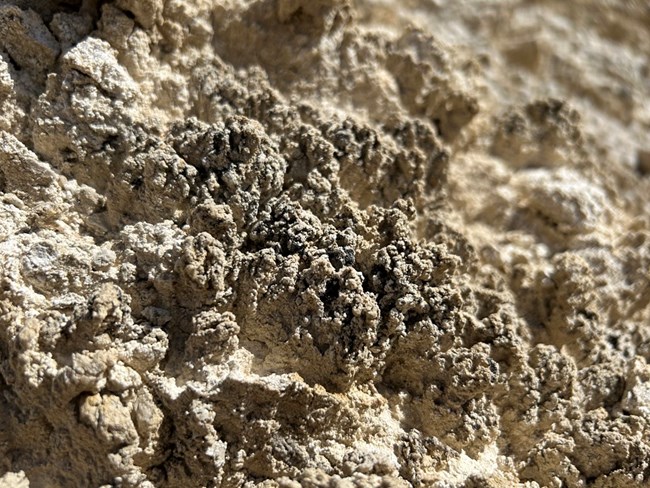
NPS / Kyle Smith
Watch where you step - it could be biological soil crust!
– Janelle Lincks, MOJN Vegetation TechnicianBiocrusts, short for biological soil crusts, are the living floor of the desert. They result from interactions between soil particles and communities of cyanobacteria, algae, lichen and bryophytes (mosses and liverworts). Biocrusts are one of the oldest terrestrial communities and have long been paving the way for other plants to grow in desert ecosystems. A number of important ecological functions depend on them, including stabilizing soil to protect it from wind and water erosion, catching nutrient rich dust, increasing water infiltration, and providing sites for seedling establishment. This microscopic community of organisms is vital for soil health in the desert and is well worth protecting. Cattle grazing, vehicles, and foot traffic are all major threats to biocrusts. Damaged crusts can take centuries to recover.
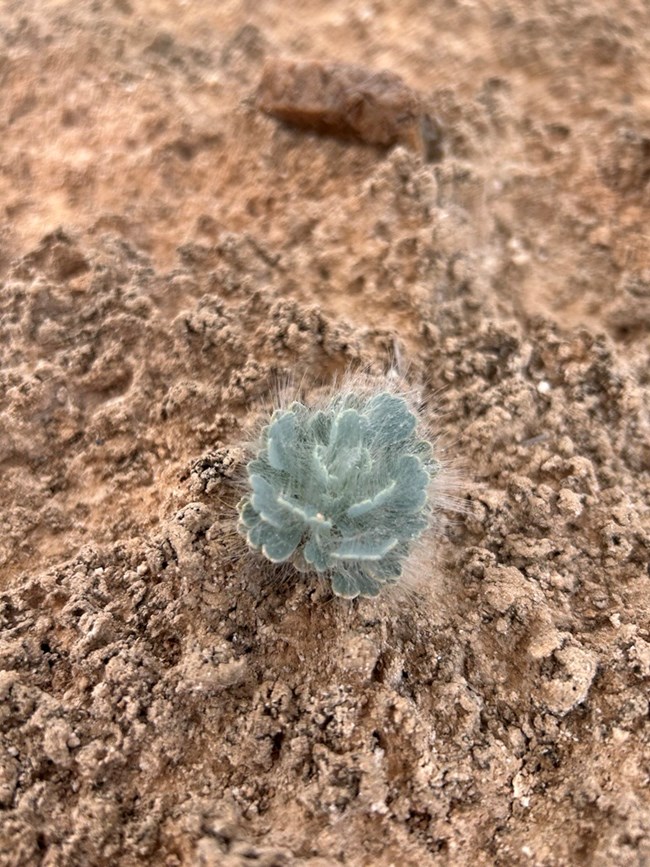
NPS / Kyle Smith
The Mojave Desert Network (MOJN) performs detailed monitoring of biocrust communities. “Biocrust is at the forefront of ecological monitoring in the West,” says MOJN’s Vegetation Ecologist, Jeff B. Galvin. “It’s an early changing metric, measuring plant cover provides useful information but the change is much slower than what we see in biological soil crust,” he adds. Jeff explains that the overall diversity and frequency of biological soil crust is indicative of landscape health; widespread and diverse biocrust cover generally indicates a healthy and resilient vegetation community.
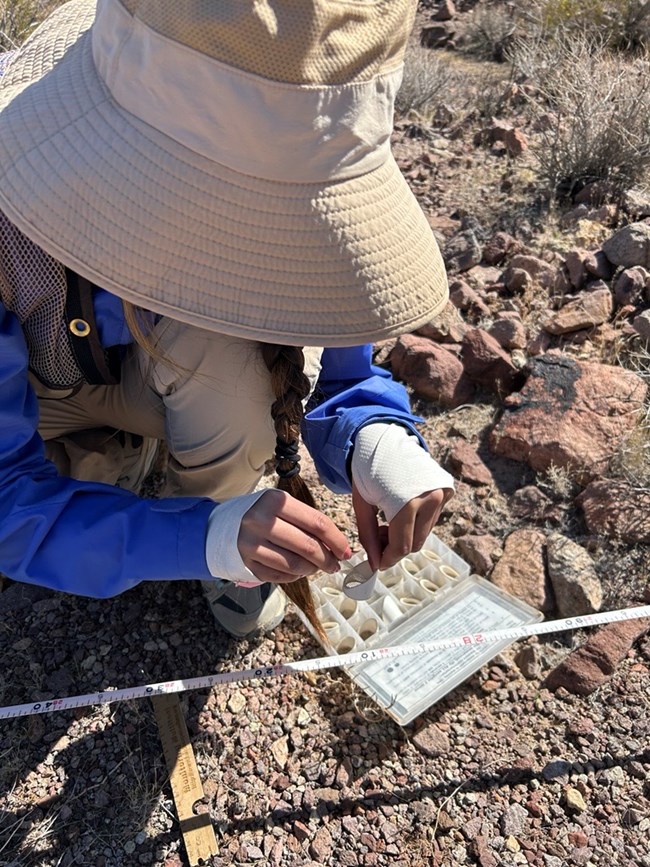
NPS / Kyle Smith
This year the MOJN veg crew will implement biocrust monitoring at the new Integrated Upland plots in Death Valley. Our excitement over the intriguing topography of the soil surface has grown as we’ve become acquainted with the strange and delicate world rising up in a few millimeters of soil. Suffice to say, we will carefully watch where we step.

NPS / Kyle Smith
Highlights from the Field
Our five new seasonal vegetation interns spent two weeks in March training with the vegetation monitoring team at Lake Mead National Recreation Area. This training emphasized implementing the Integrated Uplands (IU) protocol, which will be our focus in May and June. Initial training took place in the Lakeshore Drive area, and then more intensive training took place at the Meadview area. The Meadview area has a large ecosystem of Joshua tree woodlands, the target sampling community that we will monitor this summer in Death Valley National Park. Practicing our protocols at Lake Mead allowed us to more accurately train new staff and to compare recorded values between observers, ensuring that all crew members are on the same page. We now feel confident that we can hit the ground running and collect quality data at Death Valley.
–Kyle Smith, Vegetation Field Lead
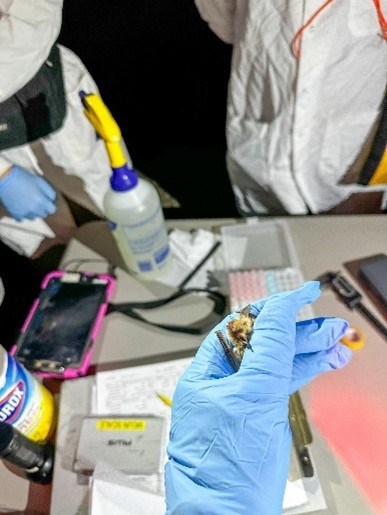
NPS / Sofia Elizarraras
The bat monitoring crew kicked off the summer capture season in March! During capture season, we use mist nets to trap bats so we can screen them for the fungus that causes white-nose syndrome. We spent our first week of white-nose syndrome screening mist-netting throughout Lake Mead National Recreation Area and Tule Springs Fossil Beds National Monument. That was followed by a week spent capturing bats in Death Valley National Park, and then in early April, the team headed to Grand Canyon-Parashant National Monument. The first few weeks of bat monitoring has been full of awesome volunteers, visiting cool sites, and lots and lots of bats! The crew finished up the season with trips to Mojave National Preserve and Joshua Tree National Park.
–Sofia Elizarraras, Wildlife Technician
NPS / Jeanette Jurado
Benthic Macroinvertebrate Data Package Published!
As part of our Streams and Lakes and our Selected Large Springs protocols, we collect benthic macroinvertebrates (small aquatic animals including insects, snails, worms, molluscs, and crustaceans) because they are good indicators of water quality. We sample benthic macroinvertebrates at springs and streams in Great Basin National Park as well as at springs in Death Valley National Park, Joshua Tree National Park, Lake Mead National Recreation Area, and Grand Canyon-Parashant National Monument. These data help us address our monitoring objectives of understanding status and trends in the health of our streams and springs, in the benthic macroinvertebrate communities in our streams, and identifying potentially impaired water quality. Data for sampling years 2009 through 2023 are now available in the NPS Data Store!Publications of Interest About Resources in MOJN Parks
The Inventory & Monitoring Division has implemented a service-wide program, Vegetation Mapping Inventory, to classify and map vegetation in national parks. Other divisions within the National Park Service's Natural Resource Stewardship and Science directorate also conduct research on resources in the parks. The Geologic Resources Division, among many services it provides, inventories the geology and soils of national parks. See below for recent publications from these two programs that pertain to MOJN parks!Spring and Summer Field Schedule
| Park | April | May | June | July | August | September |
| DEVA | Desert Springs1 | Integrated Upland Vegetation, Bats2 | Integrated Upland Vegetation, White Pine, Bats2 | White Pine | – | – |
| GRBA | – | Streams and Lakes | Bats2 | White Pine, Bats2 | – | Streams and Lakes |
| JOTR | Selected Large Springs1, Spring Vegetation, Bats3 | Bats2 | Selected Large Springs | – | – | Selected Large Springs |
| LAKE | Selected Large Springs | Bats2 | Selected Large Springs | – | – | Selected Large Springs |
| MANZ | – | – | – | – | – | – |
| MOJA | Selected Large Springs, Bats3 | Bats2 | Selected Large Springs | – | – | Selected Large Springs |
| PARA | Desert Springs1, Selected Large Springs, Spring Vegetation, Bats3 | Bats2 | Selected Large Springs, Bats2 | – | – | Selected Large Springs |
2Bat acoustics
3Bat capture
* Document is internal to Department of Interior staff.

Alison Gause
NPS Mojave Desert Inventory & Monitoring Network
601 Nevada Highway
Boulder City, Nevada 89005
